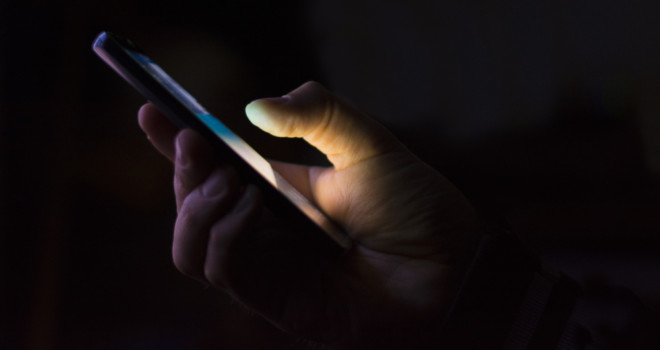As Catholic parents, we want our children to understand sex differently than the rest of the world does. We want them to understand and affirm chastity, knowing why it’s important. We want them to appreciate sex as a gift from God to be shared within the context of marriage.
For many parents, that may seem like an almost impossible ideal, given the state of the culture. Just imagine that an alien suddenly dropped into our world to find out what our society thinks about sex. He’d observe how sex is presented in the TV shows we watch, the movies we go to see, the magazines and books we read, in sex education classes, and in what we look at on our computer screens and smartphones.
It’s not hard to figure out what his conclusions would be. He’d assume that everyone’s “doing it,” that there aren’t any consequences (or none that anyone worries about ahead of time), that it’s apparently enjoyable but not meaningful, that marriage has nothing to do with it, and that there’s no moral component to it.
If we let the world raise our kids, they’ll end up believing what the
alien would: that sex is purely an act of pleasure, without meaning or
consequence, to be engaged in without restriction (except for artificial
contraception, of course).
That’s a far cry from the truth about sex according to the Church — which is pretty simple. Sex is intended for people who are married (marriage being the union of one man and one woman), and it has two purposes: to bind a husband and wife together and to make babies. But you might be surprised at how few children — including Catholics — know and believe this. The National Survey of Youth and Religion (NSYR), conducted between July 2002 and April 2003, examined the religious, family and social lives of adolescents. Mark Regnerus, an associate professor of sociology and religion at the University of Texas, was a co-investigator for the study. His 2007 book, Forbidden Fruit: Sex & Religion in the Lives of American Teenagers, details the findings of that and similar research.
Among the questions teenagers were asked was this: “Do you think that people should wait to have sex until they are married, or not necessarily?” Only 51.2 percent of Roman Catholic teens said yes. (Mormon teens ranked highest, at 77.3 percent, followed by 73.7 percent for Evangelical Protestants. Mainline Protestants were just slightly higher than their Catholic counterparts, at 51.9.)
In terms of actual practice, the statistics are dismal. In his later book, Premarital Sex in America: How Young Americans Meet, Mate and Think About Marrying, co-authored with Jeremy Uecker, Regnerus writes that “among all emerging adult women [ages eighteen to twenty-three] in any form of romantic relationship, only about six percent are not having sex of some sort.”
The sad truth is that some young people never even hear what the Church teaches about sex. A young woman, originally from South America, once told me about her experience teaching at a Catholic high school here in the U.S. Her students didn’t hide from her the fact that many of them were engaging in sexual activity. When she told them it was against the teaching of the Church, they scoffed. “Maybe it is in your country,” they told her, “but not here.”
It’s up to us to make sure our kids know the real truth about sex according to the Church’s teachings. But we can’t stop there: we must also prepare them for the lies they’ll have to confront. Remember that our kids, like the imaginary alien, will be bombarded by explicit and implicit messages that say exactly the opposite. One of the biggest obstacles they’re likely to encounter is pornography.
Dr. Jill Manning is a therapist specializing in research and clinical work related to pornography and problematic sexual behavior. She’s also the author of What’s the Big Deal About Pornography? A Guide for the Internet Generation. In her experience, young people often first turn to pornography for sexual information. They hear a word or a term they’re embarrassed to ask about, so they look to the internet. That can lead them into a world of outrageously graphic and often perverse demonstrations of sexual behavior for which they have no frame of reference. Young people who are exposed to pornographic images at a formative stage of their growth as sexual beings will often come to see sexuality as disconnected from relationships, and certainly disconnected from any spiritual context. Another danger is that they may begin to objectify human beings, seeing others in a context devoid of feelings, personalities, and needs.
The Witherspoon Institute, a research center based in Princeton, New Jersey, spent two years studying the social costs of pornography. A wide range of experts in various fields, hosted by Robert P. George, met to present research on the subject of the problem of pornography in society. The project’s overview statement addressed the issue of how pornography has evolved: “Today’s pornography…is increasingly of the hardcore variety, meaning the presentation, through moving images, of real sexual acts, in which the focus of attention is on the sexual organs of the participants, male or female, heterosexual or homosexual, adult or child.”
Not only is today’s porn significantly more graphic, and therefore more
harmful, it’s also significantly more accessible. Thanks to the digital age, pornography is
available in virtually any home with access to the internet and in the hands of
anyone with a laptop, tablet, or smartphone.
According to statistics cited by Pat Fagan, director of the Marriage and
Religion Research Institute, seventy-five percent of porn-watching is done on
smartphones.
Dr. Manning believes that parents need to discuss the existence and the
dangers of pornography with children, just as they would with drugs and alcohol. Parents must let their children know, in an
age-appropriate way, that there are dangerous and inappropriate things on the
internet. Communication should run both
ways, with children agreeing to talk about anything they see online that makes
them feel uncomfortable. Children should
also be aware that they might stumble across pornography by mistake and that
friends might try to show them things they shouldn’t see. They should be told what to do in both of
those circumstances. One book to
consider for young children is Good
Pictures Bad Pictures: Porn-Proofing Today’s Young Kids by Kristen A.
Jenson and Gail Poyner. It’s a
read-aloud book with the goal of installing an internal filter in children’s
brains to keep them safe from the poison of pornography.
Parents should make use of the filtering software available for
installation on digital devices that can greatly decrease the likelihood of
children accessing inappropriate material.
Educate and Empower Kids (EducateEmpowerKids.org) has excellent
information on its website for parents about filters, including their list of
the best internet and phone filters of 2018.
Perhaps most importantly, parents need to be in charge when it comes to
the cell phones, tablets and computers they’re paying for! From the start, insist on knowing passwords
and logins, and reserve the right to monitor kids’ devices. Even if children protest, they may actually
feel safer knowing you’re looking over their shoulders. Be clear that having a phone or computer is a
privilege, not a right and remember that protecting your children’s digital
lives is part of being a good parent today.












